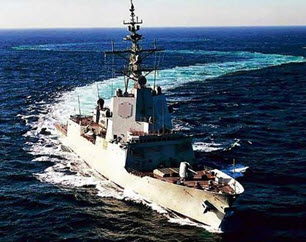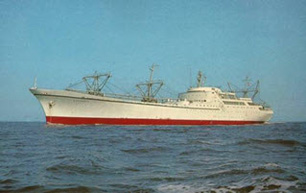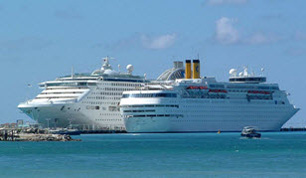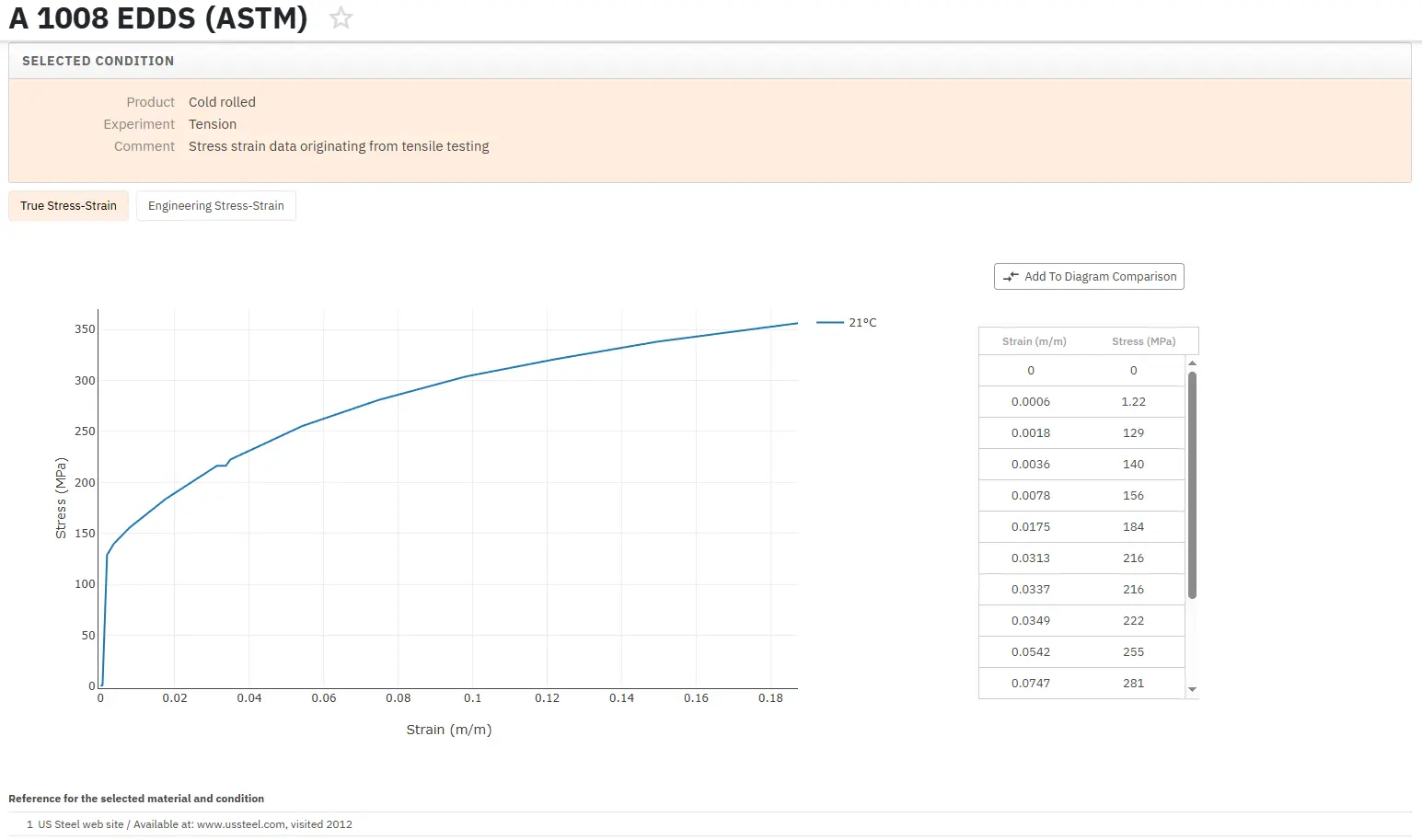Shipbuilding Steels: Part One
Abstract
Various shipbuilding requirements, such as reduction in welding man-hours, shortening of welding lines, elimination of cutting steps, stabilization of fabricated part quality and reduction in control costs, have been met by developing TMCP high-strength steels that require no preheating for welding, irregular-section plates and plates with close dimensional tolerances, and by increasing the stringency of pre-shipment plate quality control.
A demand for heavy thick plates with a good combination of high strength, toughness, and weldability has been widely growing in recent years for large container ship building. Because of this, e tra high-strength termomechanically processed steels TMCP have been developed to be more user friendly than the traditional steels.
E cellent handling properties are based on thermomechanical treatment that reduces the need for e cessive use of alloying elements to strengthen the steel. TMCP plates are thermomechanically controlled rolled, and with greater plate thicknesses, also accelerated cooled after rolling.
Generally, TMCP steels are supplied as heavy plates, surface treated plates and plate components. Due to the very low carbon equivalent, TMCP steels are easily weldable using all common processes. In addition, they are easy to form, bend and edge.
TMCP steels give many monetary advantages to the shipbuilder:
- Reduced plate thickness
- Saving weight in the final structure
- Greater effective loads during use
- Cost savings in welding and fabrication.
The successful application of thermo-mechanical control process (TMCP) with the recent innovative technology has induced the development of EH36, EH40, and EH47 grade steel plates. The alloying elements such as boron, copper, and nickel were added and the rolling and cooling processes were strongly and precisely controlled to improve the strength and toughness at the same time. EH36 steel plate for high heat input welding was successfully developed with good toughness at the heat affected zone (HAZ) by increasing the thermal stability of TIN particles at the high temperature.
The quality of shipbuilding steels has an e tremely large impact on the quality, efficiency and cost of ships built from those steels. Many steel producers established a system to supply wide and long plates to the shipbuilding industry.
Various shipbuilding requirements, such as reduction in welding man-hours, shortening of welding lines, elimination of cutting steps, stabilization of fabricated part quality and reduction in control costs, have been met by developing TMCP high-strength steels that require no preheating for welding, irregular-section plates and plates with close dimensional tolerances, and by increasing the stringency of pre-shipment plate quality control. Table 1 shows the common steel grades for shipbuilding.
Table 1: Steel for Ship Building
| Lloyds | Norske Veritas |
Germanischer Lloyds |
Bureau Veritas |
American Bureau of Shipping |
USSR Register |
Nippon Kaigi Kyoka |
| A | A | A | A | A | A | A |
| B | B | B | B | B | B | B |
| D | D | D | D | SS | D | D |
| CD/DS | ||||||
| NV A27S | ||||||
| NV D27S | ||||||
| AH 32 | NV A32 | A 32 | AH 32 | AH 32 | A 32 | |
| DH 32 | NV 32 | D 32 | DH 32 | DH 32 | D 32 | |
| EH 32 | NV E32 | E 32 | EH 32 | EH 32 | E 32 | |
| AH 34S | ||||||
| DH 34S | ||||||
| EH 34S | ||||||
| AH 35 | NV A36 | A 36 | AH 36 | AH 36 | A 36 | |
| DH 36 | NV D36 | D 36 | DH 36 | DH 36 | D 36 | |
| EH 36 | NV E36 | E 36 | EH 36 | EH 36 | E 36 | |
| NV A40 | ||||||
| NV D40 | ||||||
| NV E40 | ||||||
| NV A420 | ||||||
| NV D420 | ||||||
| NV E420 |
Steel in shipbuilding
Shipbuilding traditionally uses structural steel plate to fabricate ship hulls. Modern steel plates have much higher tensile strengths than their predecessors, making them much better suited to the efficient construction of large container ships.
A particular type of plate is available with a designed-in resistance to corrosion, ideal for building oil tankers. Such steels make possible much lighter vessels than before, or larger capacity vessels for the same weight, offering significant opportunities to save on fuel consumption and hence CO2 emission.
The advanced steels used in these steel-plate applications also find uses in a number of related industries. Offshore oil rigs, bridges, civil engineering and construction machines, rail carriages, tanks and pressure vessels, nuclear, thermal and hydroelectric plants – all these applications benefit from the attributes of modern steels.



Figure 1: Ships: Navy, Cargo and Cruise
In recent years, more attention has been paid to the safety and durability of ships and environment protection of sea, which have lead to the development of new structural steel plates. One of them is the development of more corrosion resistant plates for double-hull tankers. Crude oil carriers are now required to have double hulls to prevent oil spill, and an increase in temperature in oil tanks with the double hull structure increases the likelihood of corrosion of upper deck steel plates exposed to the vapor space in the tanks. To prevent the corrosion and to increase the life time of the ships, different corrosion resistant steel palates have been developed.
The development of new steel plates has also been made to increase construction efficiency and thereby to decrease construction cost. Longitudinally profiled (LP) steel plates were developed in this context. Thickness change within a plate was achieved by controlled rolling, which made it possible to replace the plates which had been made by welding steel plates of different thickness, and therefore to reduce the welding time and cost.
Another development is concerned with residual stress retaining in steel plates. TMCP steel plates are likely to possess residual stresses from their production, and this often results in distortion in different ways after cutting and welding of the plates. In order to achieve residual stress-reduced steel plates, temperature differences over the large surface area in a wide and long plate and through the thickness should be minimized and cold levering is also used for the purpose of reducing inhomogeneous stress for block shape accuracy.
A number of research projects are currently being carried out on the European and national levels to improve the application of lasers and optical technologies in shipbuilding. In laser beam welding, centre line solidification cracks in the fused zone are in issue and can limit the travel speed and hence productivity.
The fused zones are typically of the same composition as the steel being welded and whilst there are several welding procedural factors which can be used to minimize the risk of cracking, the problem hinges on the steel composition. Lower S and P levels may thus be required as shown in Table 2.
Table 2: Classification society guidelines for laser welding of ship hull
| C 0.12% max | (lower speeds ≤ 0.15%) |
| S 0.005% max | (≤ 0.010% for ≤ 12 mm, 0.6 m/min) |
| P 0.010% max | (≤ 0.015% for ≤ 12 mm, 0.6 m/min) |
| CE 0.38% max | |
| Weld hardness ≤ 380 HV5 max | (≤ 400 HV5 isolated) |
Seguir leyendo
¡Acceda Ahora a las Propiedades Precisas de los Aceros Estructurales!
Total Materia Horizon contiene información sobre las propiedades de más de 150.000 aceros estructurales: composición, propiedades mecánicas y físicas, propiedades no lineales y mucho más.

Obtenga una cuenta de prueba GRATUITA de Total Materia Horizon y únase a nuestra comunidad que traspasa los 500.000 usuarios provenientes de más de 120 países.